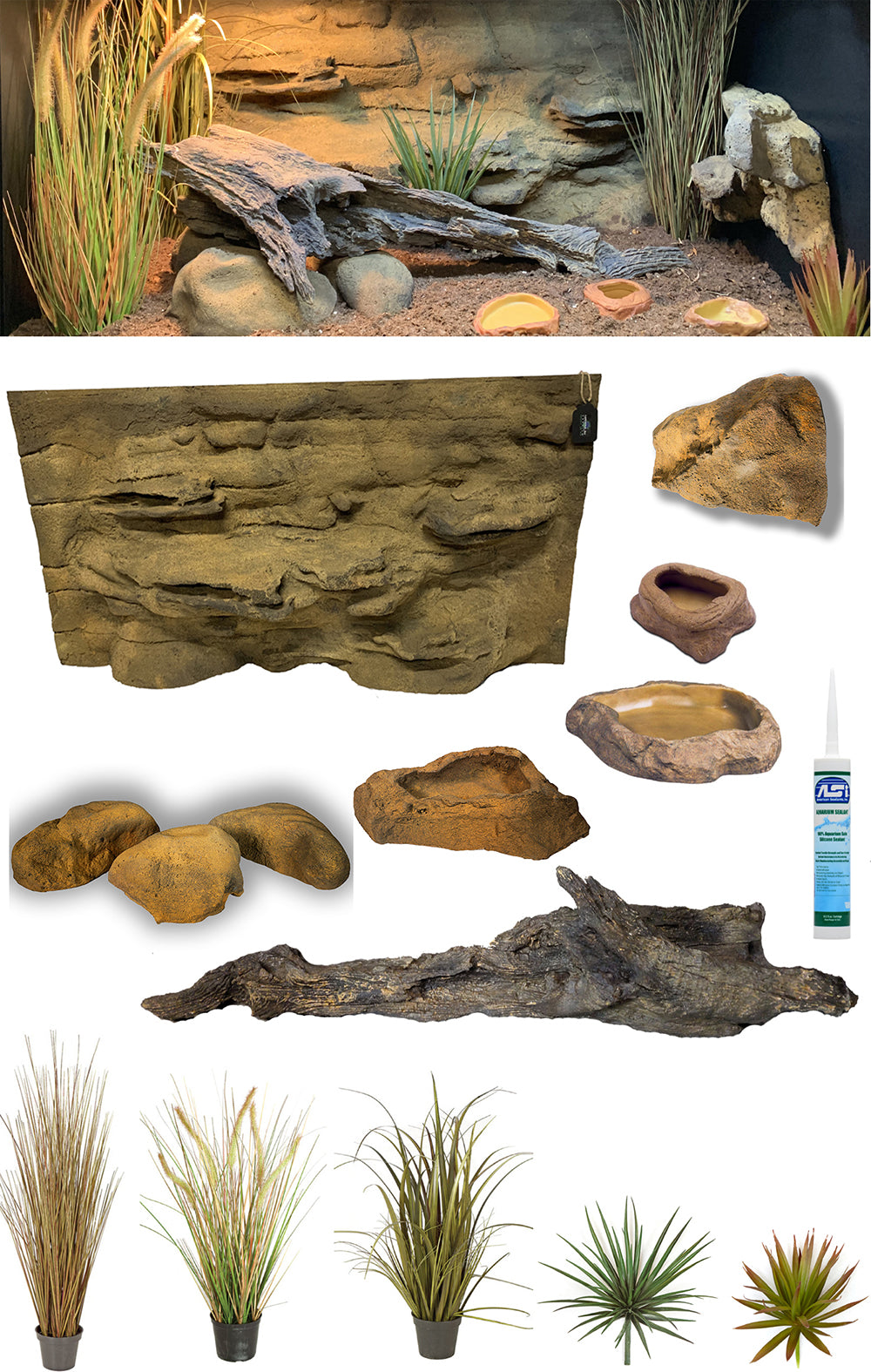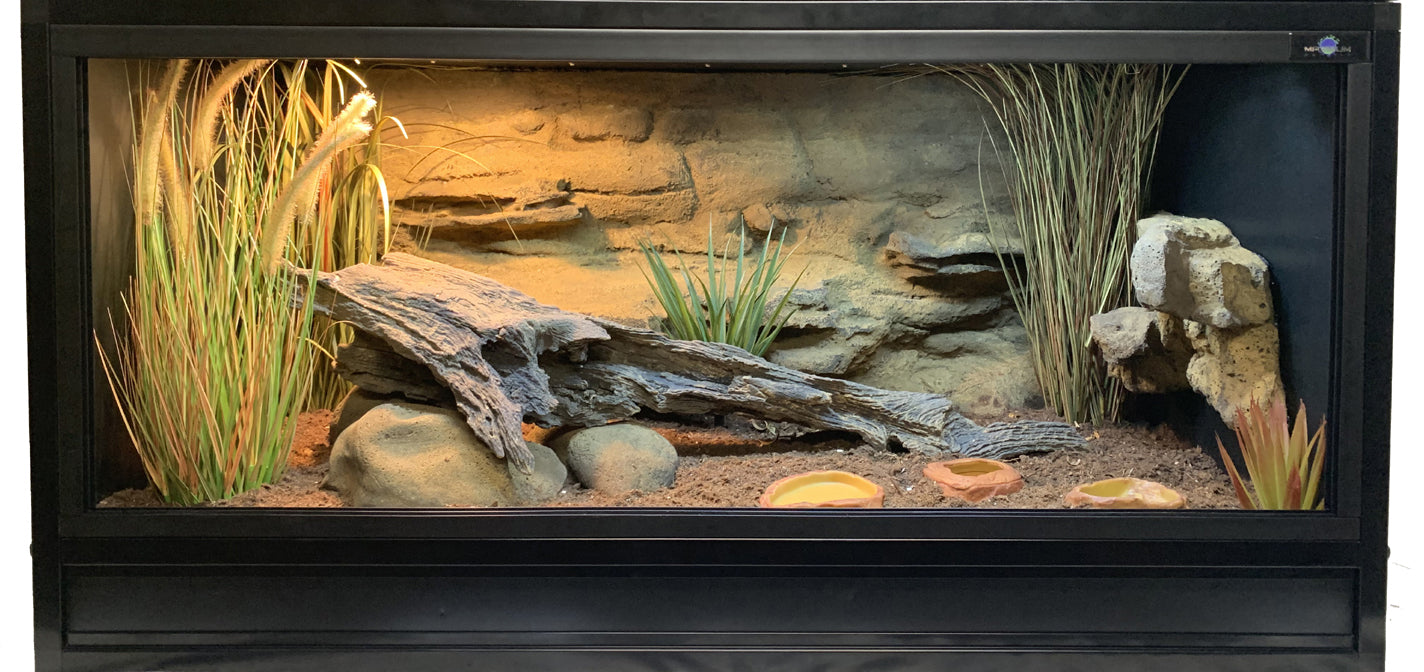As a passionate reptile owner and enthusiast, I’ve learned that a well-decorated habitat is not just about aesthetics; it’s crucial for the wellbeing of your cold-blooded friends. In this comprehensive guide, I will share my experiences, insights, and complete information on choosing and maintaining decor for reptiles.
Why is Decor Important for Reptiles?
Creating an appropriate habitat for reptiles goes beyond simple survival needs. A thoughtfully designed space can mimic their natural environment, helping them thrive and providing mental stimulation. Here are some key reasons why decor is essential:
- Environmental Enrichment: Decor can enrich your reptile’s environment, promoting natural behaviors.
- Security and Hiding Spots: Reptiles often feel more secure with places to hide, which reduces stress.
- Temperature Regulation: Proper decor can help regulate airflow and temperature, critical for cold-blooded animals.
Essential Elements of Reptile Decor

1. Hiding Spots
Reptiles love to hide, and providing adequate hiding spots can keep them feeling safe. You can use items like:

- Natural caves
- Commercially available hides
- Wooden logs
- Plants and foliage
Comparison Table: Hiding Spots

| Type | Material | Pros | Cons |
|---|---|---|---|
| Natural Caves | Stone, Clay | Appealing, durable | Can be heavy, costly |
| Commercial Hides | Plastic, Resin | Affordable, easy to clean | Less natural look |
| Wooden Logs | Wood | Natural appearance, engaging | Can rot, requires maintenance |
| Plants | Plastic, Live | Adds beauty, provides hiding spots | Live plants require care |
2. Climbing Structures

Many reptiles, such as tree-dwelling species, thrive with climbing opportunities. Incorporating climbing structures can also aid in exercise and mental stimulation. Options include:
- Branches
- Wooden shelves
- Rope bridges
- Commercial climbing decor

Pros and Cons of Climbing Structures
- Pros:
- Encourages natural behavior.
- Provides exercise opportunities.
- Enhances the aesthetic of the enclosure.
- Cons:
- May require frequent cleaning.
- Can be unstable if not installed properly.

3. Substrate Options
The substrate you choose can affect your reptile’s health and the overall aesthetic of the habitat. Common substrates include:

- Coconut fiber
- Reptile carpet
- Sand
- Paper towels
Substrate Comparison Table
| Substrate | Material | Pros | Cons |
|---|---|---|---|
| Coconut Fiber | Coconut Pulp | Natural, absorbent | Can hold humidity |
| Reptile Carpet | Fabric | Reusable, easy to clean | Can retain odors |
| Sand | Natural Sand | Natural look, easy drainage | Risk of impaction |
| Paper Towels | Pulp | Cost-effective, easy to replace | Less aesthetic value |
Choosing the Right Decor for Your Pet’s Species
It’s crucial to align your decor choices with the species of reptile you own. Different reptiles have unique habitat needs. Let’s explore some common species and their decor requirements.
Common Reptile Species and Their Decor Needs
- Bearded Dragon: Needs a combination of basking areas, hiding spots, and climbing structures.
- Leopard Gecko: Prefers soft substrates, with hides and low climbing options.
- Ball Python: Enjoys a dark, secure habitat with plenty of hiding spots.
- Chameleon: Requires vertical space with live plants and climbing branches.
Personal Experience: Designing My Bearded Dragon’s Habitat
When I first got my bearded dragon, I was overwhelmed with choices. After researching, I decided to create multiple basking spots with rocks and logs, ensuring plenty of hiding spots using decorative caves. Adding a few plastic plants helped mimic his natural environment without the hassle of maintaining live ones.
Maintaining Your Reptile Decor
Regular maintenance is vital to keep the habitat clean and safe for your reptiles. Here are some tips for effective decor maintenance:
- Clean hides and substrates regularly to prevent odors and bacteria.
- Inspect climbing structures for stability and wear.
- Replace any decor that shows signs of damage or wear.
- For live plants, monitor their health and replace as needed.
FAQs About Reptile Decor
What materials are safe for reptile decor?
Safe materials include untreated wood, natural stones, and specific plastic items designed for reptiles. Always avoid chemicals or coatings that could be harmful.
How often should I change the substrate?
Substrate changes depend on the type used. Generally, it should be replaced or cleaned every 2-4 weeks, but more frequently for those that retain moisture or odors.
Can I use live plants in my reptile’s habitat?
Yes, many reptiles benefit from live plants, but ensure that they are non-toxic and compatible with your reptile’s habitat conditions.
How do I know if my reptile is stressed?
Signs of stress in reptiles can include hiding excessively, changes in eating habits, or aggressive behaviors. Proper decor can help minimize stress.
What’s the best way to introduce new decor to my reptile’s habitat?
Introduce new decor gradually to allow your pet to adjust. Monitor their behavior closely during this transition.
Conclusion: Crafting the Perfect Habitat
Creating an ideal environment for your reptiles is a rewarding journey that combines aesthetics with practicality. By considering your pet’s natural habitat, needs, and preferences, you can craft a space that promotes health and wellbeing. My experience has shown me that thoughtful decor leads to happier, healthier reptiles, and I hope this guide helps you achieve the same for your beloved pets.